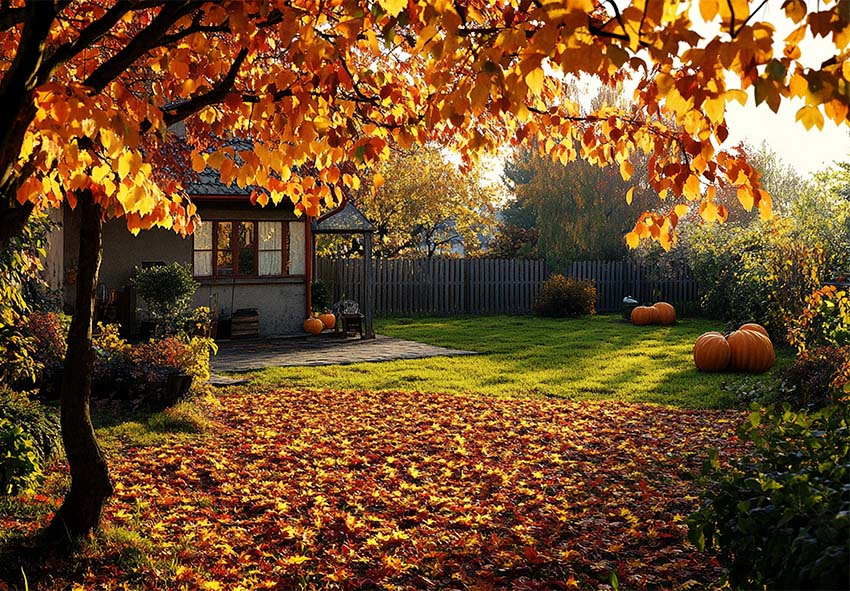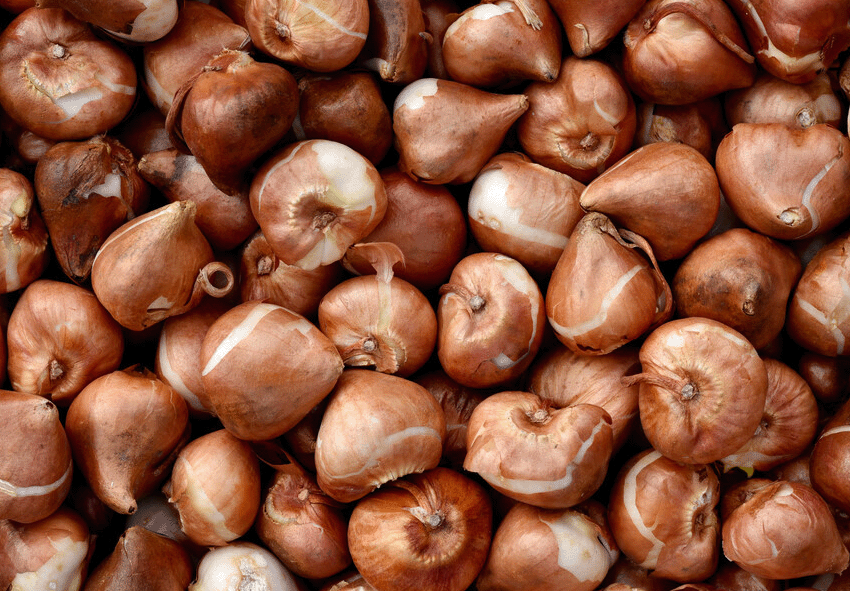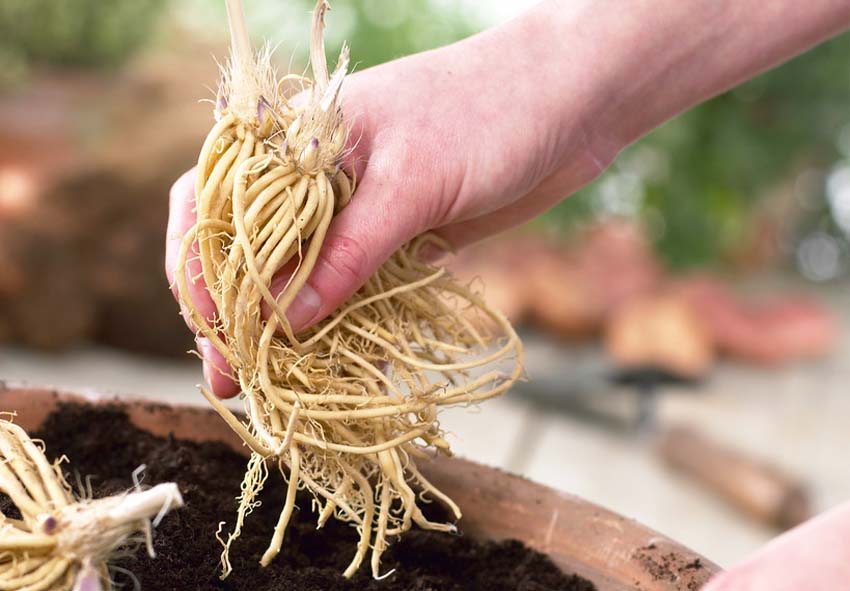Autumn planting provides numerous benefits for gardeners aiming to create a thriving and vibrant garden. The cooler temperatures of fall allow plants to establish strong root systems before the winter, leading to healthier, more robust growth come spring. This article will cover essential autumn planting tips, recommend ideal plants like bulbs and perennials, and guide you on how to prepare your garden for success. Our gardening blog is a perfect place to find all the information you need!
Why Autumn Planting is Beneficial

Autumn planting offers several advantages for gardeners looking to establish healthy, resilient plants. Cooler temperatures reduce stress on newly planted bulbs, perennials, and shrubs, allowing them to focus on root development. By the time spring arrives, these fall-planted specimens have a head start, emerging stronger and more established.
Cooler Temperatures and Less Stress for Plants
As the weather cools, the stress that plants face when being transplanted is significantly reduced. Unlike spring planting, where sudden heat waves can cause transplant shock, autumn offers a gentler transition for plants. The consistent coolness allows plants to focus on root establishment rather than battling extreme temperatures, making fall the ideal time for successful planting.
Additionally, pests and diseases that thrive in summer heat are less active in fall, further reducing stress on newly planted shrubs, bulbs, and trees. This slower-paced environment allows plants to adjust gradually, giving them a much-needed head start for the next growing season.
Increased Root Development
Planting in autumn gives plants a head start in root development. While above-ground growth may slow or stop during the cooler months, roots continue to grow and establish themselves in the soil. This leads to stronger, healthier plants by spring, with a better chance to thrive once the growing season begins.
Furthermore, the moist, cool soil of autumn helps encourage deep root systems, essential for better nutrient uptake and water retention. By the time spring arrives, plants have already developed a solid foundation, making them more resilient to drought and temperature fluctuations during the warmer months.
Essential Autumn Planting Tips

To ensure success with autumn planting, start by preparing the soil, adding compost or organic matter to improve drainage and fertility. Pay attention to planting depth—bulbs should be planted about three times their height deep, while perennials may need more shallow planting. Spacing is equally important to prevent overcrowding and promote healthy air circulation.
Soil Preparation
Before planting, ensure your soil is well-prepared for the new arrivals. Add compost or organic matter to improve soil structure and boost nutrients. Test your soil’s pH to ensure it matches the needs of the plants you’re introducing. For bulbs and perennials, it’s important to have well-drained soil to avoid waterlogging, especially during winter, which can lead to root rot.
Planting Depth and Spacing
Proper planting depth and spacing are critical for both bulbs and perennials. Bulbs, like tulips and daffodils, should be planted at a depth that’s roughly three times the height of the bulb. Perennials may vary, so follow planting guidelines for each species. Adequate spacing ensures plants have room to grow and allows for proper air circulation, reducing the risk of disease.
Best Bulbs to Plant in Autumn
Autumn is the perfect time to plant popular spring-blooming bulbs such as tulips, hyacinths, and daffodils. Tulips add vibrant color to the garden with their varied hues, while hyacinths offer both stunning shades and a delightful fragrance.Daffodils are known for their cheerful yellow blooms and their ability to naturalize, creating a long-lasting display. Planting these bulbs in the fall allows them to undergo a cold period, essential for strong growth and abundant flowering in the spring.
Tulips

Tulips are a classic spring flower, and planting them in autumn ensures a colorful display in the garden. Choose from a wide range of varieties, from early-blooming to late-blooming types, to extend the tulip season and ensure continuous color. Tulip varieties include:
- Single Early Tulips: Bloom in early spring with strong, cup-shaped flowers.
- Darwin Hybrid Tulips: Known for their large blooms and sturdy stems, they are great for windy gardens.
- Parrot Tulips: These feature ruffled petals and vibrant, multicolored patterns, making them perfect for bold garden designs.
Plant tulip bulbs at a depth of about 6 to 8 inches in well-drained soil. Ensure that the pointed end is facing upwards. Space them about 4 to 6 inches apart to allow room for growth, and water thoroughly after planting. Tulips prefer full sun but can also tolerate partial shade, making them versatile for various garden spots.
Hyacinths
Known for their vibrant colors and delightful fragrance, hyacinths are another excellent bulb to plant in autumn. They add both visual and sensory appeal to any spring garden, blooming in shades of blue, pink, purple, and white. Hyacinths are particularly favored for container gardening and can also be grown indoors as forced bulbs for early spring enjoyment. Varieties of hyacinths include:
- Blue Jacket Hyacinth: Popular for its deep blue color and intense fragrance.
- Carnegie Hyacinth: A white variety, perfect for adding brightness and contrast.
- Pink Pearl Hyacinth: Soft pink, ideal for pastel-themed gardens.
Hyacinths prefer sunny spots with good drainage, and planting them about 4 to 6 inches deep will help them thrive. Space the bulbs around 4 inches apart to allow their full flower spikes to develop without crowding. After planting, water them lightly, as overly wet conditions can lead to rot.
Daffodils
Daffodils are ideal for naturalizing in the garden, meaning they’ll return year after year with little maintenance. With their cheerful yellow and white blooms, daffodils add brightness to any landscape. Planting them in clusters or drifts creates a natural, meadow-like appearance, ideal for cottage gardens or informal planting schemes. Popular daffodil varieties include:
- King Alfred Daffodil: A large-cupped yellow variety, perfect for mass planting.
- Tete-a-Tete Daffodil: A dwarf variety that is great for borders and containers.
- Ice Follies Daffodil: Known for its large white petals with a pale yellow cup.
Plant daffodil bulbs in clusters for a more impactful display, burying them at a depth of about 6 inches. Space them about 3 to 6 inches apart for naturalized groupings. These reliable bulbs look stunning when paired with other spring bloomers like tulips and crocuses. Daffodils are deer-resistant and can thrive in both full sun and partial shade, making them versatile for various garden locations.
Autumn Planting Guide for Perennials

Perennials like phlox, astilbe, and hostas thrive when planted in autumn, taking advantage of the cooler weather to develop strong roots. Phlox brings bright summer blooms, and fall planting ensures a healthy start for a bold display next season. Astilbes are perfect for partially shaded, moist areas, and fall planting allows them to settle in before summer. Hostas, known for their lush foliage, benefit from autumn planting as it provides them time to establish a solid root system before the next growing season.
Phlox
Phlox is a perfect perennial to plant in autumn, preparing your garden for a burst of color in summer. Available in both tall garden phlox and creeping phlox varieties, they offer versatility in garden design. Autumn planting allows the roots to settle in before winter, promoting better growth and summer blooms. Some key points for phlox planting include:
- Sunlight: Choose a sunny spot, as phlox thrives in full sun, though some varieties tolerate partial shade.
- Soil Preparation: Amend the soil with compost to improve drainage and provide nutrients.
- Spacing: Space plants about 12 to 18 inches apart to allow good air circulation and avoid mildew.
Water phlox thoroughly after planting and keep the soil moist but not waterlogged. Mulching around the plants helps retain moisture and keeps the roots cool.
Astilbe
Astilbe thrives in autumn plantings, producing a lush and colorful display the following summer. This perennial is valued for its feathery, plume-like flowers and its ability to brighten shaded areas of the garden. Fall planting gives astilbe a chance to establish strong roots before the cold winter months. Important considerations for planting astilbe include:
- Light Requirements: Prefers partial shade, although it can tolerate full sun with enough moisture.
- Soil: Astilbe prefers consistently moist, well-drained soil that is rich in organic matter.
- Spacing: Space plants about 18 to 24 inches apart to accommodate their wide foliage spread.
Astilbe requires regular watering, particularly during dry spells. Adding mulch helps retain moisture, and fall-planted astilbes benefit from a layer of organic mulch for winter protection.
Hostas
Hostas are another excellent perennial to plant in autumn. Known for their lush, ornamental foliage, hostas add texture and color to shady areas of the garden. The cooler temperatures of fall help the plants focus on root development, which leads to stronger, healthier growth in the spring. Some key planting tips for hostas include:
- Light Preferences: Hostas thrive in shade or partial shade, making them ideal for under trees or along shaded borders.
- Soil: Prepare a well-drained, nutrient-rich site, amending the soil with compost for added fertility.
- Spacing: Space hostas at least 18 to 36 inches apart, depending on the variety, to allow room for their large leaves to spread.
After planting, water deeply to help the roots establish. Applying a layer of mulch helps retain soil moisture and provides protection from winter cold. Hostas are relatively low-maintenance but benefit from regular watering during dry periods.
Planting Shrubs and Trees in Autumn

Autumn is an ideal time to plant deciduous shrubs and small trees, as the cooler weather promotes strong root growth without the stress of summer heat. Shrubs like hydrangeas and spireas, along with ornamental trees such as Japanese maples, benefit from fall planting as they can settle in before winter. By spring, these plants are well-rooted and ready to thrive.
Deciduous Shrubs
Planting deciduous shrubs like hydrangeas, spireas, and viburnums in autumn is ideal for establishing strong root systems before the winter frost. Shrubs planted in fall benefit from the cooler temperatures, which reduce stress and promote root growth. This gives the shrubs a head start in preparing for robust foliage and blooms in the spring. Key points to consider when planting deciduous shrubs include:
- Watering: Water deeply after planting to ensure the roots are well-hydrated.
- Mulching: Apply a layer of mulch to retain moisture and insulate the roots during winter.
- Soil: Ensure the soil is well-drained and enriched with organic matter for better root development.
Fall-planted shrubs may require extra watering if autumn is dry, but their reduced need for care during the colder months makes this an ideal time for planting.
Small Trees
Ornamental trees, such as Japanese maples, crabapples, and redbuds, perform best when planted in autumn. The mild temperatures of fall allow young trees to focus on root establishment without the stress of extreme heat or excessive water loss through their leaves. This helps them adapt and grow stronger by spring. Important tips for planting small trees in autumn include:
- Planting Hole: Dig a wide hole, at least twice the width of the tree’s root ball, to encourage root spread.
- Soil Amendment: Add organic matter like compost to improve soil structure and drainage.
- Mulching: Mulch around the base of the tree to protect the roots from freezing and conserve moisture.
In addition, staking may be necessary to support young trees against strong autumn and winter winds. Proper staking and careful placement will prevent damage and encourage upright growth.
Caring for Your Autumn-Planted Garden

Proper care is essential for helping your autumn-planted bulbs, perennials, and shrubs survive the winter and flourish in the spring. Key tasks include mulching to insulate the soil, watering appropriately to ensure healthy root development and also regular autumn garden cleanup. With the right maintenance, your fall plantings will establish themselves well and produce beautiful growth next season.
Mulching for Winter Protection
Mulching is a crucial step in protecting autumn-planted gardens. By adding a 2-3 inch layer of organic mulch around your plants, you help insulate the soil, retain moisture, and protect the roots from freezing temperatures. Use materials such as straw, wood chips, or shredded leaves to provide adequate insulation while allowing the soil to breathe.
Watering Techniques
Watering is just as important in autumn as in any other season. Newly planted bulbs, perennials, and shrubs need consistent moisture to establish roots. However, it’s important to water deeply and infrequently to encourage root growth. During dry autumn spells, keep an eye on the soil moisture and water accordingly, but avoid waterlogging, which can lead to root rot.
Common Mistakes to Avoid When Planting in Autumn
Avoiding common mistakes like planting too late or improper watering is crucial to ensure your fall garden succeeds. Planting early in autumn gives roots time to establish, while maintaining proper watering habits is vital for plant health. Being mindful of these issues will help you make the most of your autumn planting efforts.
Planting Too Late in the Season
One common mistake is planting too late in autumn, which can prevent roots from establishing before the first frost. Ideally, plant six to eight weeks before the ground freezes to give your plants time to settle in. Check your climate zone and adjust your planting schedule accordingly to ensure your garden’s success.
Overwatering or Underwatering
Balancing moisture levels is crucial for autumn planting. Overwatering can lead to waterlogged soil and root rot, while underwatering can prevent root establishment. To find the right balance, check the soil moisture regularly, ensuring it’s damp but not soggy. Well-drained soil is key to preventing these issues and supporting healthy growth.
Conclusion
Autumn is the perfect time to plant bulbs, perennials, shrubs, and trees for a thriving garden in the coming seasons. By following essential planting tips — such as proper soil preparation, mulching, and watering — you can help your garden establish strong roots and prepare for a vibrant spring. Explore our online store for all your autumn planting needs and get ready for a beautiful, colorful garden next year!
Frequently Asked Questions (FAQs) about Autumn Planting
1. Why is autumn a good time for planting?
Autumn offers cooler temperatures and more consistent rainfall, reducing stress on newly planted bulbs, perennials, shrubs, and trees. This allows plants to establish strong root systems before winter, preparing them for vigorous growth in spring. Additionally, the soil is still warm from summer, promoting better root development during fall.
2. What types of plants should be planted in autumn?
Bulbs like tulips, daffodils, and hyacinths are ideal for autumn planting, as well as perennials such as phlox, astilbe, and hostas. Deciduous shrubs like hydrangeas and spireas, along with small ornamental trees like Japanese maples, also benefit from being planted in fall for better root establishment.
3. Can I order autumn planting bulbs in your online store?
Absolutely! Our online store Dutch-bulbs.com offers a wide variety of autumn planting bulbs, including popular options like tulips, daffodils, and hyacinths. You can easily browse our selection, choose your desired bulbs, and place your order for delivery. Make sure to check back often, as we update our inventory regularly to ensure you have access to the best quality bulbs for your garden!
4. How can I protect my autumn-planted garden over winter?
Mulching is essential to protect autumn plantings. Apply a 2- to 3-inch layer of mulch around bulbs, perennials, shrubs, and trees to insulate the soil and retain moisture. Water the plants well before the first frost to keep the roots hydrated, and in colder climates, consider using burlap or garden fabric to protect delicate plants.
5. Can I plant trees and shrubs in late autumn?
Yes, trees and shrubs can be planted in late autumn as long as the ground isn’t frozen. Early autumn is preferable for better root development, but planting in late autumn is still possible. Just ensure you water deeply after planting and mulch around the base to protect the roots from cold temperatures.
Published: 22.10.2024
